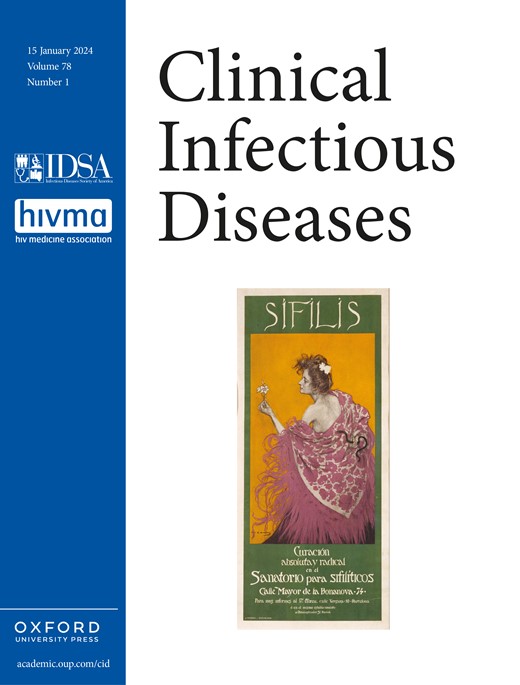Emergence and Spread of Clostridioides difficile Isolates With Reduced Fidaxomicin Susceptibility in an Acute Care Hospital
IF 8.2
1区 医学
Q1 IMMUNOLOGY
引用次数: 0
Abstract
Background There have been several recent reports of Clostridioides difficile infection (CDI) due to isolates with reduced fidaxomicin susceptibility (minimum inhibitory concentration [MIC] ≥ 2 µg/mL). However, the clinical implications are uncertain because fidaxomicin achieves high concentrations in the intestinal tract. Methods In an acute care hospital, we conducted a 3-year cohort study of patients with CDI to determine the frequency of infection with isolates with reduced fidaxomicin susceptibility and the impact on response to fidaxomicin treatment. Stool specimens were cultured for C. difficile, and susceptibility testing was performed using agar dilution. Whole-genome sequencing was used to identify mutations associated with reduced fidaxomicin susceptibility and to determine relatedness of isolates. For genomically related susceptible and reduced susceptibility isolates from the same patient, we compared rates of growth, sporulation, and toxin production. Results Of 108 fidaxomicin-treated patients, 6 (5.6%) were infected with isolates that possessed reduced fidaxomicin susceptibility (MICs 8–32 µg/mL), including 3 with initially susceptible isolates followed by clinical failure with subsequent recovery of genomically related isolates with reduced susceptibility. Isolates with reduced fidaxomicin susceptibility harbored mutations in RNA polymerase associated with reduced susceptibility and exhibited reduced toxin production, and 20% to 40% of isolates tested had reduced growth and/or sporulation in comparison with susceptible isolates. Three patients were infected with genomically indistinguishable ribotype 097 isolates with reduced fidaxomicin susceptibility. Conclusions Our findings highlight the potential for the emergence on therapy of clinically relevant reduced fidaxomicin susceptibility in C. difficile and its spread via transmission to other patients.求助全文
约1分钟内获得全文
求助全文
来源期刊

Clinical Infectious Diseases
医学-传染病学
CiteScore
25.00
自引率
2.50%
发文量
900
审稿时长
3 months
期刊介绍:
Clinical Infectious Diseases (CID) is dedicated to publishing original research, reviews, guidelines, and perspectives with the potential to reshape clinical practice, providing clinicians with valuable insights for patient care. CID comprehensively addresses the clinical presentation, diagnosis, treatment, and prevention of a wide spectrum of infectious diseases. The journal places a high priority on the assessment of current and innovative treatments, microbiology, immunology, and policies, ensuring relevance to patient care in its commitment to advancing the field of infectious diseases.
 求助内容:
求助内容: 应助结果提醒方式:
应助结果提醒方式:


